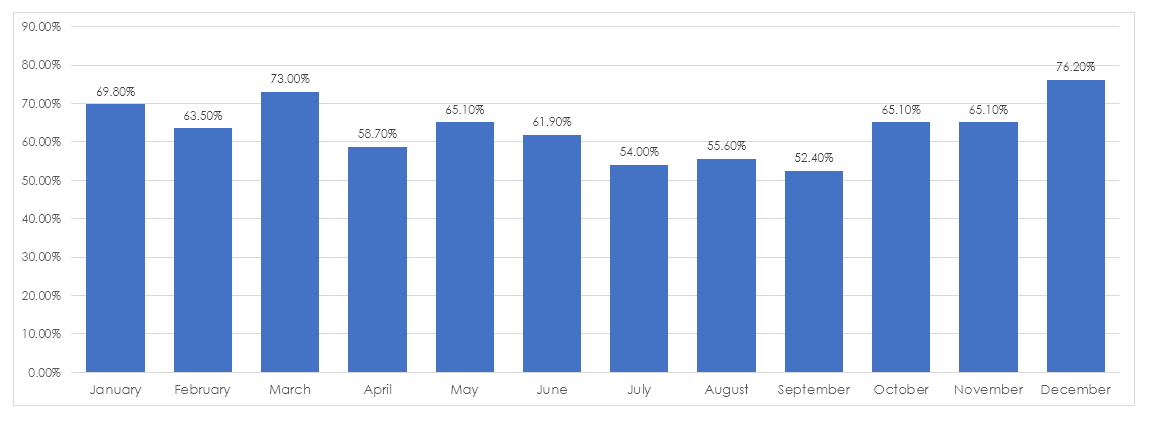Just as December is the month when financial experts…..sorry dickheads make total fools of themselves by making worthless predictions for the upcoming year so January is the month where everybody bangs on about how January predicts the year. Unfortunately, it doesn’t; it is yet another zombie idea that has taken root in the financial community which those on the sell side cling to like a drowning person clings to a piece of wreckage. The central tenet is that if January is a positive month then the ensuing year will also be positive. The background to this idea can be traced back to 1942 when Sidney B. Wachtel an investment banker made the observation that since 1925 US small caps outperformed the overall market during January. This effect was said to be magnified during the third year of a presidential term. We immediately have two problems in terms of basic system design. A small sample size comprising the period 1925 to 1942 and a simple observation rather than any form of rigorous investigation. Hindsight when coloured by the biases that all people bring to trading is the perfect investment tool. Unfortunately, looking backwards at a market and saying I would have done this because I noticed that is not really an acceptable form of system design.
The first feature of this idea relies upon the presumed fact that January is the best predictor of the coming year. The data below is from my archive and relates to the S&P500 (I am not certain where the data came from so cannot credit it)
What can been is that March is actually a better predictor than January as to the direction of the market for the year.
In terms of this being a viable trading strategy for the local market we can examine that by looking at the gain for January and the subsequent gain for the year.
The movement in January coincides with the yearly movement about 66%. However, as can be seen there are some notable exceptions and it it the exceptions that cause difficulty for this as a trading strategy. It appears that if you had bought the market at the end of January and held till the beginning of January the following year you would have a very marginal strategy. When looking at the chart above it is important to look not just at the perceived notion that January predicts the trajectory of the year but rather the long term trajectory of yearly returns. Traders are obsessed with being right because of the perceived nexus between being right and making money. Thus whenever anyone is told that an indicator or tool has a hit rate of 66% they immediately latch onto it not understanding that it is the times when it doesn’t work that dictate the profitability of a trading system. It needs to be remembered that this strategy is repeated as a buy and hold mantra for traders, as such it should, if it worked have a true positive expectancy.






